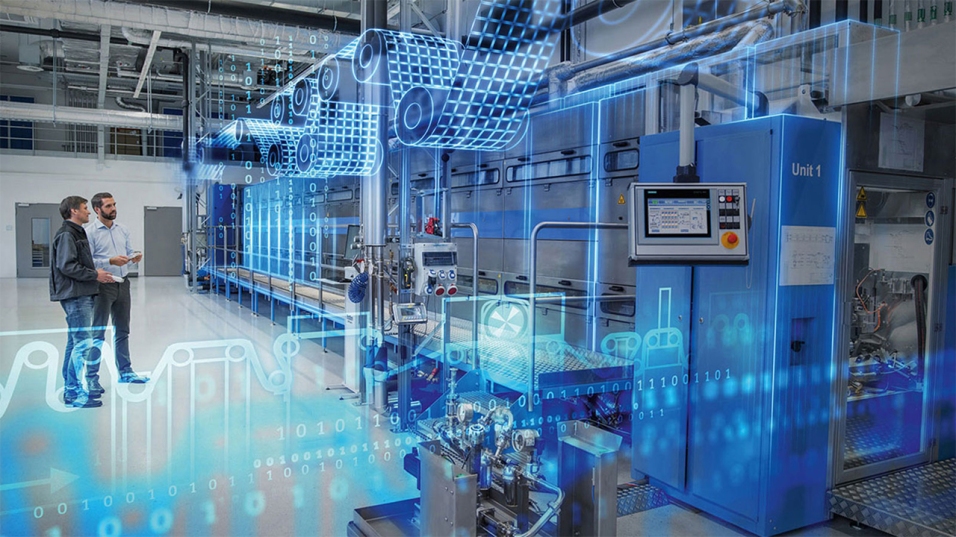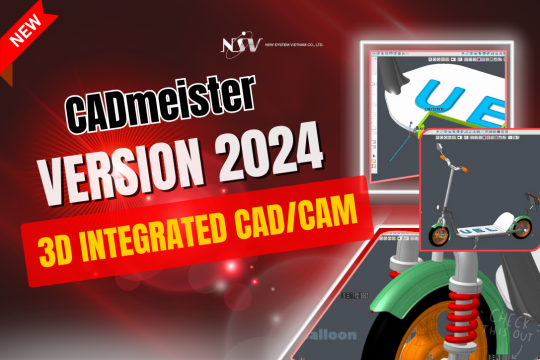Introduction to PLM: From Design to Manufacturing and Engineering Data Management

As digital transformation accelerates across the manufacturing industry, effective management of data and product development processes has become a key factor in maintaining competitiveness.
This is where PLM – Product Lifecycle Management comes in: connecting people, processes, and technical data in a unified system that helps businesses optimize every stage from design to production and maintenance.

1. What is PLM?
PLM is a comprehensive solution that manages all information, processes, and resources related to a product throughout its lifecycle — from concept to market release and end-of-life.
Beyond simply storing technical data, PLM serves as a collaborative platform that enables design, engineering, manufacturing, quality, and project management teams to work in sync and with full transparency.
As a result, any design or process change is instantly reflected across the system, ensuring data consistency, traceability, and minimizing technical errors.
2. Core Areas of PLM
2.1 Product Data Management (PDM)
PDM forms the foundation of every PLM system. It stores, controls, and manages access rights for CAD files, 3D models, BOMs (Bill of Materials), and related technical documents.
Key benefits:
- Centralized and secure data storage.
- Complete version control and easy traceability.
- Enables efficient collaboration without data duplication.
2.2 Process and Change Management
PLM helps organizations control the entire change process — from proposal to approval and execution — ensuring that all changes are documented, assessed, and implemented in a controlled manner.
Key benefits:
- Multi-level approval workflows with clear accountability.
- Reduced engineering errors and production risks.
- Faster response to market demands.
2.3 Collaboration and Configuration Management
PLM fosters a collaborative working environment, allowing internal and external teams to access, update, and share data in real time.
Key benefits:
- Data synchronization across departments and suppliers.
- Management of complex product configurations and design variants.
- Data integrity and consistency across the entire value chain.
2.4 Leading PLM Software Solutions
There are several PLM platforms available today such as Siemens Teamcenter, PTC Windchill, and Autodesk Fusion Lifecycle.
Among them, Dassault Systèmes stands out with 3DEXPERIENCE – a next-generation PLM platform that integrates product development, design, simulation, collaboration, and data management into one unified environment.
At the core of this platform is ENOVIA, which enables enterprises to:
- Centralize all product data in a secure cloud-based system.
- Manage access rights and version control efficiently.
- Collaborate seamlessly across engineering, management, and suppliers in real time.
- Integrate smoothly with CATIA, DELMIA, and SIMULIA, creating a complete digital value chain from design to production.

3. Benefits of Using PLM Software
3.1 Reduces Errors and Improves Data Accuracy
By storing all product information in a unified system, teams across engineering, management, and production can easily access the latest data.
This eliminates discrepancies between design versions and ensures reliability throughout approval and manufacturing stages.
In complex industries like aerospace, automotive, or industrial equipment, data consistency is the key to ensuring product quality and compliance.
3.2 Shortens Product Development and Time-to-Market
PLM significantly reduces product development time.
Thanks to digitalized workflows, teams can work concurrently — designers modify 3D models while production teams prepare materials — all based on the same technical data.
According to Dassault Systèmes, companies using PLM can reduce development time by 25–30% compared to traditional processes.
3.3 Enhances Collaboration and Innovation
PLM creates a shared digital workspace for the entire organization — connecting engineers, managers, suppliers, and even customers in real time.
With 3DEXPERIENCE, teams can co-design, simulate, test, and gather feedback virtually — fostering innovation and collaborative culture across the enterprise.
3.4 Enables Data-Driven Decision Making
PLM provides managers with full visibility into the product lifecycle — from design cost and inventory status to operational efficiency.
This allows faster, more accurate decision-making, resource optimization, and strategic product planning.
4. Applications of PLM in Modern Industries
4.1 Automotive Industry
PLM helps automakers manage thousands of components, hundreds of configurations, and complex global supply chains.
With ENOVIA, design, manufacturing, and maintenance teams can collaborate on shared data, significantly reducing testing time while ensuring compliance with international safety standards.

4.2 Electronics and Smart Devices
In fast-evolving technology sectors, PLM enables hardware, software, and production teams to collaborate flexibly on a unified platform while maintaining strict control over PCB, casing, and sensor module versions.
This accelerates innovation and helps bring new products to market faster.
4.3 Industrial Machinery
Manufacturers use PLM to connect CAD/CAM/CAE data with real-world production, ensuring continuity from 3D design to CNC machining.
Configuration management features allow precise tracking of design versions for maintenance and product customization.

4.4 Aerospace and Heavy Industry
PLM supports the management of highly complex structures such as aircraft bodies, turbines, and industrial electrical systems.
Every modification is documented, analyzed, and approved through strict workflows — minimizing risks and ensuring absolute safety.

4.5 Energy and Green Industry
As sustainability becomes a global priority, PLM enables tracking of materials, lifecycle simulation, and recycling optimization.
Combined with the 3DEXPERIENCE platform, businesses can monitor product environmental impact right from the design phase, moving toward green manufacturing and carbon reduction.
Conclusion
PLM is entering a new era with Cloud PLM and enterprise-wide data integration.
Among the leaders, Dassault Systèmes’ 3DEXPERIENCE stands out as a unified PLM environment that connects people, processes, and data in a single virtual space.
💡 At NSV, we are an authorized reseller and implementation partner of 3DEXPERIENCE and ENOVIA, helping businesses enhance technical data management, accelerate innovation, and optimize manufacturing processes.
👉 Contact NSV today to receive consultation and experience the most suitable PLM solution for your enterprise.



